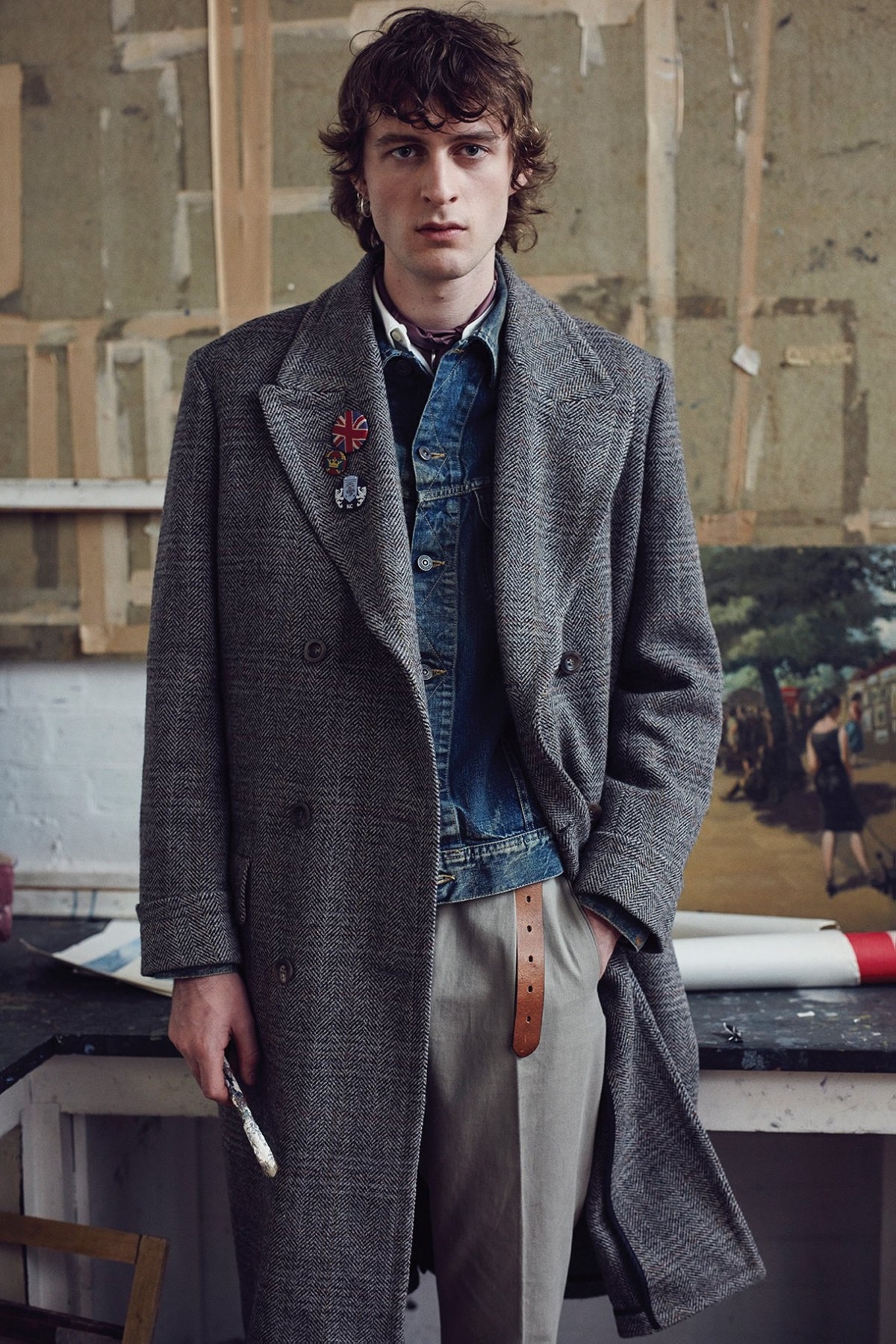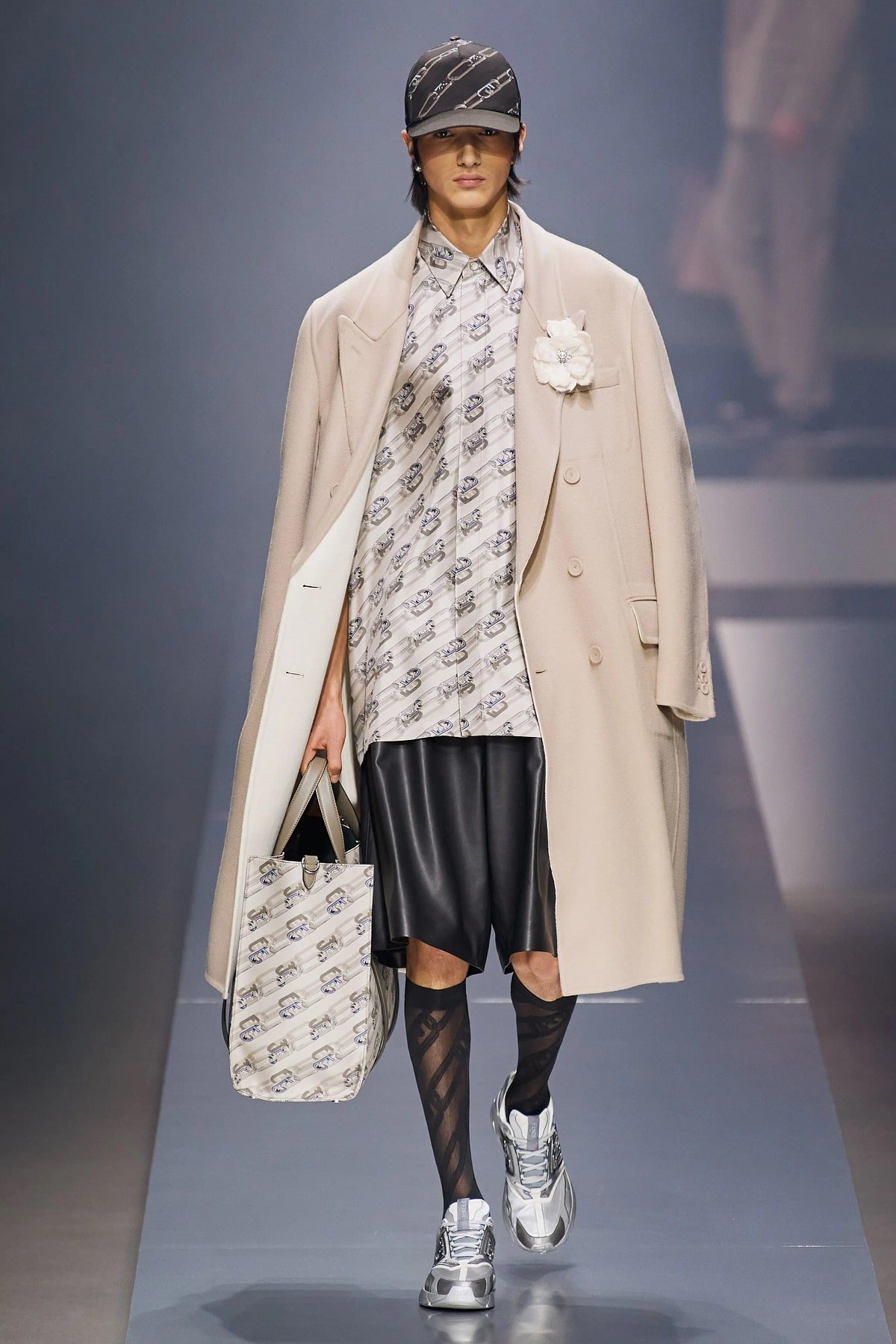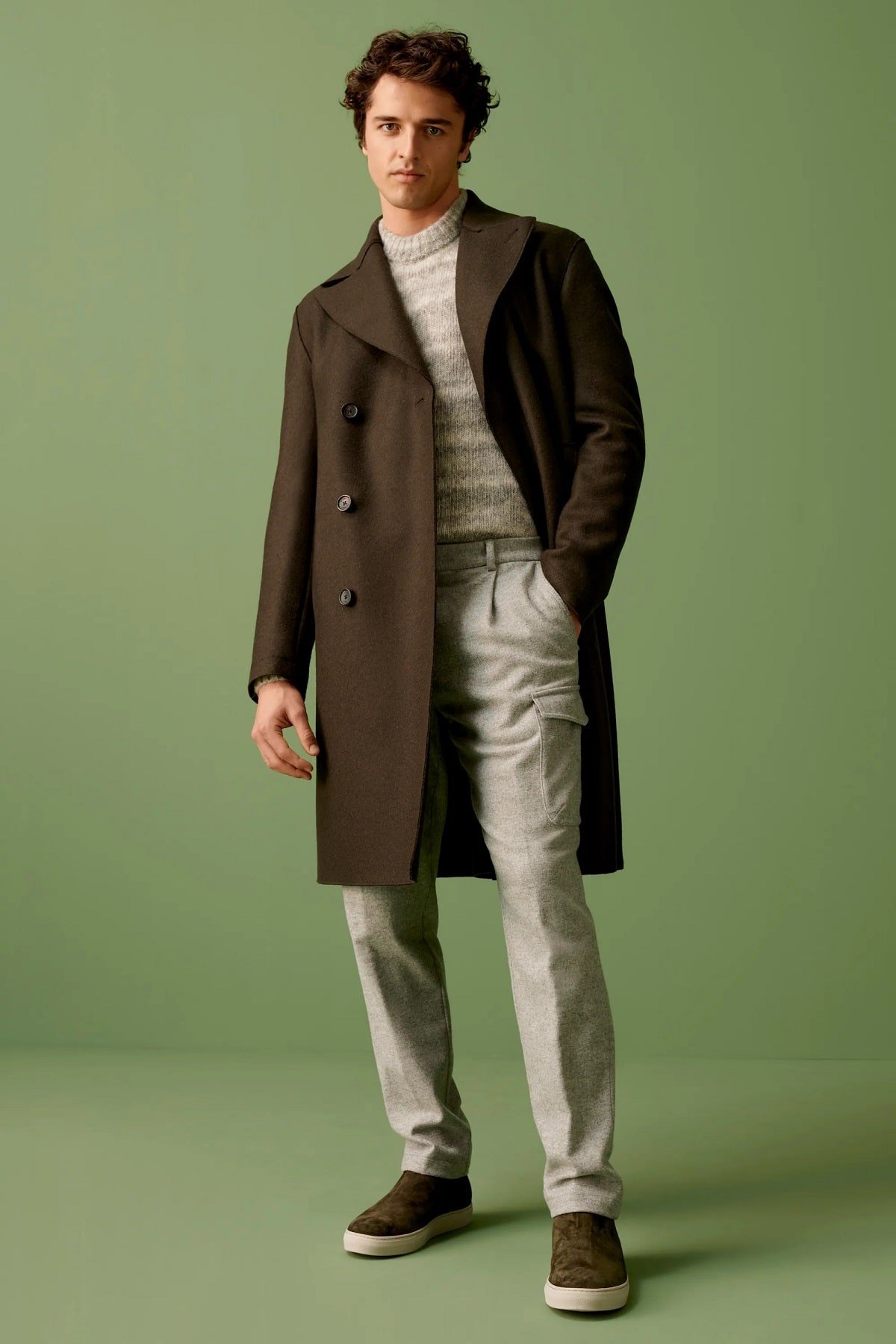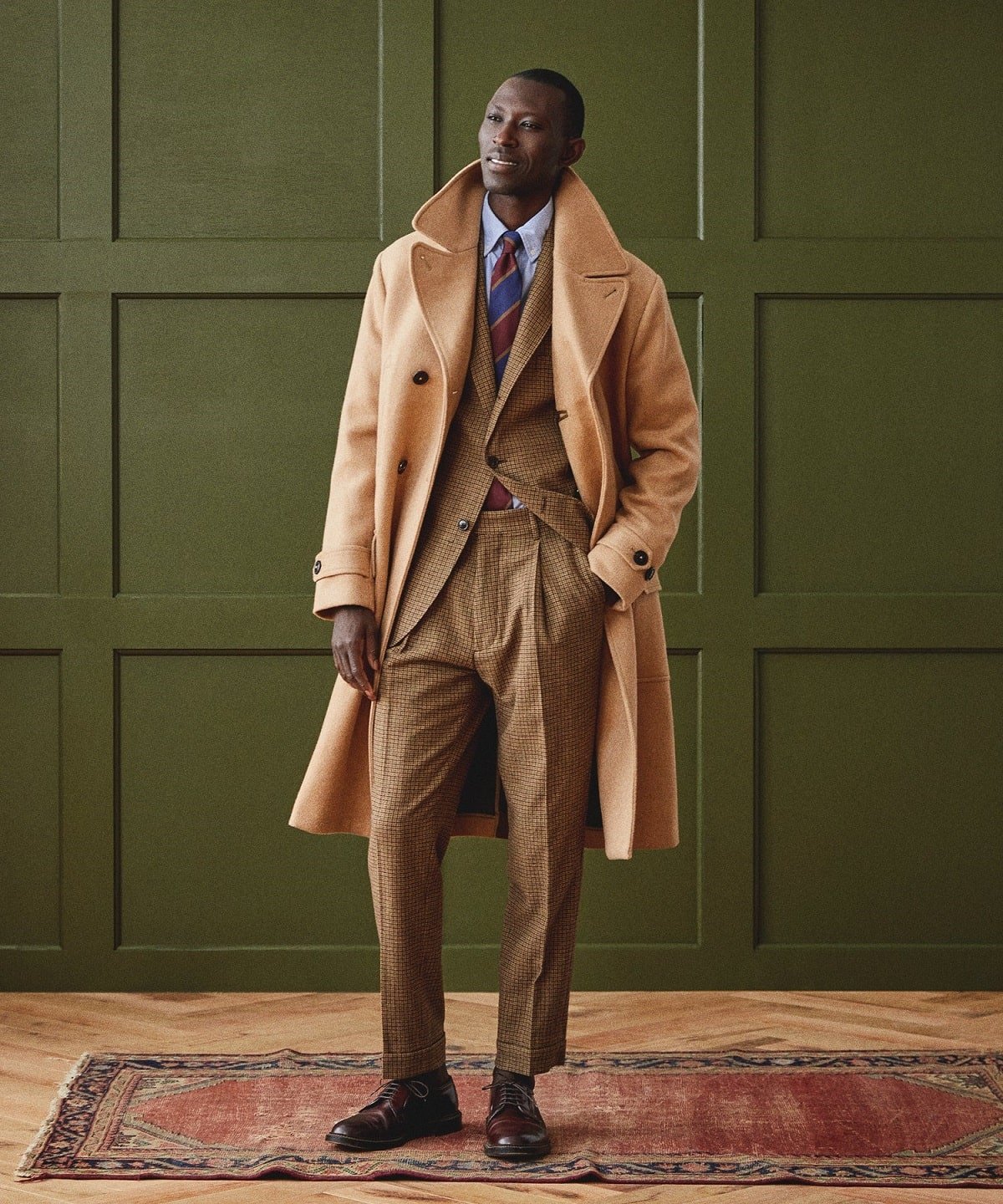1
HOME > Tips & Advice >
HOW TO STYLE A LONG OVERCOAT
Written by Ivan Yaskey in Tips & Advice on the 7th October 2022

If a staple garment suddenly appears in Fashion Week presentations, can you call it a trend – or is it more of a revisit? While that question falls in line with asking, “Do classics ever disappear?”, the answer mirrors one of this season’s more prominent patterns: long, somewhat drapey, and occasionally belted overcoats prove that timeless garments have no end date. Rather – and this goes with developing a classic wardrobe – you learn to restyle and periodically rework them. Capsules form your wardrobe’s foundation, offering firmer ground for building upward and trying out something new. The same old, same old tends to come off as stale: We’ve seen this all before and now expect something different. Although, in this case, you could easily tell someone to adjust their expectations and not reinvent the wheel each time, outerwear tends to be a lot like dining: We’re drawn to the comfort foods, especially those that remind us of home or some facet of childhood but continue to seek out something unexpected and novel. While a bright red or plaid overcoat certainly won’t evoke that type of familiarity, this season’s shift serves to remind us that, despite the prominence of puffers and tech jackets, the lengthier, structured silhouette never truly fades out. Here’s how you can approach it from a fresher angle:
What is an Overcoat?
To start, let’s define what’s considered an overcoat, as trench and peacoats tend to be lumped in with this category. Not getting into the weeds, this garment features mid- to heavyweight fabric, often wool, in a length that hits around the knees – maybe slightly shorter or longer. The shoulders tend to appear a bit defined – and may even feature epaulets – and the front has a single- or double-breasted closure. As well, it’s functional – just spacious enough to be worn over a suit, and crafted to block out moisture and winds without a half-dozen fabric treatments. No, you might not be able to wear it on a hike – but, honestly, how frequently do you wear your Arc’Teryx for a walk in the local woods? – but for getting to and from the office and anywhere you need to be, it looks sharp, has a high degree of adaptability, and keeps your clothes underneath dry. Within this framework, the basic attributes are:
- Cotton or wool construction, based on seasonal wear. Transitional options will lean more toward midweight cotton or wool, while cold-weather garments will take advantage of wool’s full array of properties.
- Length, with the overcoat falling toward the knee and no farther than mid-thigh and covering any blazer or suit jacket underneath.
- Sleeve length should also fully cover your blazer, suit jacket, or shirt cuff.
- A regular fit that’s neither too slim – you won’t be able to fit anything more than jeans and a T-shirt underneath – nor too baggy that it looks like you’re sporting a garment bag as outerwear.
Considering these parameters, style your overcoat based on the following:

Fit
It’s cliché to say that fit is the most definitive aspect of a garment, but it’s a statement that holds true no matter what you’re wearing or where or how you’re wearing it. In the case of the overcoat, fit can communicate casual in the most direct sense – perhaps oversized or worn open and unbelted – and can also illustrate that you’re a buttoned-up, by-the-rules type. Of course, not paying attention to the rest of your outfit can also speak to a degree of sloppiness or lack of attention to detail. Here, your baseline is modestly relaxed: You should be able to slide it on over whatever you’re wearing. At the same time, considering your height, make sure it consistently falls to the knee area, although this doesn’t have to be exact. Also realize that length can enhance your height – or at least create such an illusion. Overcoats that hit above the knee tend to make you appear taller, while those going past mid-thigh can act as a shroud, no matter how structured the body appears.

Colour
Ask yourself about longevity and brashness. Yes, for the moment, the palette of neutral and cool shades has been expanded to encompass pastels as well as purple and burgundy. If you’re looking for an overall transformation, something from this newer territory does the trick without much effort. Yet, at the same time, you’re encouraged to think about how well the colour meshes with the rest of your wardrobe: If you lean toward prints and more experimental chino colours (think pink or orange), a pale mint or periwinkle overcoat doesn’t effectively gel. However, it does offer something less predictable – and speaks to your boundary-pushing attitude – if what you typically wear runs more toward charcoals, white, and navy. On the other hand, if trends and newness still come with a lack of stability and you can see them fading out in the distance, it’s better to remain on more solid, dependable ground. In this regard, “classic” in the way of overcoats typically translates to camel – a light contrast compared to charcoal or navy – as well as black, a deeper charcoal, light grey, or navy. This array exudes versatility and lets the silhouette speak for itself. You also have a bit more freedom with the rest of your outfit – prints, experimental colours, and accessories.

Fabric
Considering the space it covers, fabric texture is nearly as important as colour. This isn’t something where you’ll sport head-to-toe mohair, despite its popularity at the moment, and in fact, a tweed or houndstooth might come off as a bit of overkill. Instead, let the colour speak for itself without too many outside elements. Instead, for another step toward versatility and greater possibilities, look for a finer wool with a matte finish. Also, on the subject of fabric, consider the weight and when you intend to wear the overcoat. If it’ll strictly be a winter garment, it’s heavyweight or bust – unless you plan to layer strategically or live in a warmer to temperate climate. For transitional wear, short of wearing a trench coat, opt for a midweight fabric that’s lightly lined and is less likely to wrinkle.

What to Wear with an Overcoat
The statement is a bit presumptuous: After all, what can’t you wear with a garment you simply have to throw over? Still, menswear guides focus on the relationship between it and a suit. Yet, as the recent trends show, it’s entering the casual to smart-casual transitional lexicon:
- Casual: A poorly sized overcoat can look like a bathrobe over a T-shirt and jeans or joggers. Yet, too close fitting breaks up the relaxed, rakish appeal. Instead, if you’re being pragmatic in terms of coverage and application, aim for some space – you’ll want to layer underneath with a hoodie or bomber as the temperatures gradually drop this time of year – and look to wear it open and unbelted.
- Smart-casual: If you’re one of the many now heading back to the office, a midweight overcoat delivers unassuming elevation and breaks away from the mundanity of fleece quarter-zips. Here, look for something that can fit fully over and avoid wrinkling a blazer or suit jacket. Especially in this context, be mindful of clashing colour combinations between the coat and your trousers.
- Formal: Just as with smart-casual, any overcoat worn over a suit needs to firstly complement or tastefully contrast against its colour, texture, or print. As such, avoid a black overcoat with a navy suit, and vice versa. Also pay attention to fabrics: If you’ve invested in a quality suit, make sure the overcoat’s construction is comparable.

Trending
2
3
4
5
6
7
8
9
10










